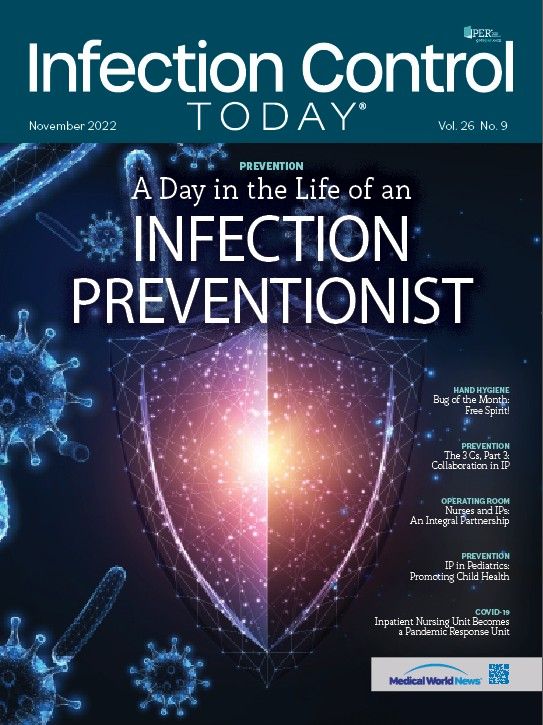Transforming a Pandemic Response Unit From an Inpatient Nursing Unit
With COVID-19 beginning to surge, University of California, San Francisco (UCSF) Medical Center needed to create a response unit from what had been an inpatient nursing unit. A recent study explains how this conversion was effective and can stand as an example for other facilities.
COVID-19 Pandemic Response Unit
(Adobe Stock)

The onset of COVID-19 demanded a host of creative thinking from health care professionals, in ways to prevent infections while still learning about the virus. The pandemic required the transformation of already established facilities, and communication along with standardization become crucial factors in the process. Safety and consistency, especially for frontline healthcare workers, were an absolute priority. Thanks to successful practices that established reliable processes, a framework has been created for COVID-19 along with future pandemics, and, thus, health care professionals the lessons and continue to modify using this foundation.
One of the lessons learned was transforming a nursing unit into a pandemic response unit and that it works best when a group of teams is established. In the study recently published in the American Journal of Infection Control, titled “Converting an inpatient nursing unit to a pandemic-response unit: Lessons learned,” the investigators reviewed how creating a pandemic response unit was done effectively and quickly. The study also covers what the issues the medical leadership encountered, and how they overcame the problems.
“Standardization and communication were crucial in maintaining safety and consistency, especially for physicians and nurses on the front line. This unit did not have any patient to staff transmission of COVID–19 due to the highly reliable processes that were put in place,” the investigators noted in the report. “These best practices create a framework for future pandemics. As we continue to learn from this and future emerging pathogens, this framework can be utilized as a foundational starting point and modified to fit the next challenge.”
The University of California, San Francisco (UCSF) Medical Center, one of the first institutions to quickly formulate a pattern of treatment once the COVID-19 surge began, needed to create a unit solely dedicated to COVID-19 care with the conversion of an inpatient nursing unit led by the Infection Prevention (IP) department. With an interdisciplinary approach, the UCSF Medical Center effectively planned, executed, and sustained caring for COVID-19 patients within a converted inpatient unit. This study describes the framework that the team created to “provide visualization, organization, and communication around some of the key elements that are needed to successfully convert a unit in this manner,” the investigators wrote.
The teams that made up the framework to create the pandemic response unit included: infection prevention, nursing, facilities and engineering, safety, and environmental services. Communication kept everything moving as smoothly as possible.
Teams Involved in Interdisciplinary Approach
- Infection Prevention
The central part of the pandemic response policy, this team develops the approach to COVID-19 patients, from admittance to discharge. Combined with the Department of Medicine Division of Infectious Diseases, this team provides guidance for isolation requirements and personal protective equipment (PPE). This team organizes by providing check lists and signage. The infection prevention team works with staff on direct care, training, and safety issues. Various staff members and health care professionals can perform roles in support of infection prevention. These include roles such as PPE Monitors and advisers on screening methods and follow-up on exposure.
- Nursing
Nurses took the brunt of the COVID-19 pandemic workload to reduce exposure and transmission by other staff members. Nurses established a workflow area with equipment at the ready, and the pattern was the same in every pandemic-specific room. These included areas for lab specimens, medication, inhalers, and other supplies. The rooms were clearly marked with reminders of the protocol.
- Facilities and Engineering
For this hospital, the facilities and engineering team needed to convert the 28-patient room unit to negative pressure, so air scrubbers and HEPA filtration were added to achieve appropriate airflow.
- Safety
The teams included in the safety department were the Environmental Health and Safety (EH&S) and security teams. The teams selected, disinfected, and stored PPE, and faced issues when PPE was difficult to obtain, and alternative solutions had to be found.
Security dealt with travel flow with transporting patients, keeping out visitors, and allowing only staff with badge access on the unit.
- Environmental Services
The role of Environmental Services (EVS) was vital to cleaning and disposal of waste for the protection of all patients and staff, preventing cross-contamination once a patient is moved from the room, and a new one is moved in. The guidance for this work was given from local, state, and national health experts, and included reducing exposure time in the patient room. When supply shortages occurred, the EVS team collaborated with the IP team to eliminate essential items waste.
Communication
Hospital leadership included the sum of all groups as well as the Patient and Family Advisory Council. The pandemic response unit reported all updates to Incident Command, which helped to determine workflows and common practices as the pandemic evolved. Communication was crucial in planning for emergency facilities if the pandemic unit overflowed. Once a protocol was established, it helped bring clarity to the pandemic phase. The patients’ loved ones were kept apprised through the Patient and Family Advisory Council. Patients were given information about this plan of action and provided with as much comfort as possible during their isolation.
Because these guidelines were established, the facility was able to avoid patient-to-staff transmission of the virus.

Phage Therapy’s Future: Tackling Antimicrobial Resistance With Precision Viruses
April 24th 2025Bacteriophage therapy presents a promising alternative to antibiotics, especially as antimicrobial resistance continues to increase. Dr. Ran Nir-Paz discusses its potential, challenges, and future applications in this technology.
Robust infectious disease surveillance, including rapid subtyping of influenza A, is essential for early detection, containment, and public health reporting of novel viral threats.